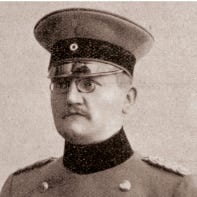The classic application of the “pincer effect” is the technique fire and maneuver. A force divides itself into two elements. The first is called the “base of fire.” The second is called the “maneuver element.” The base of fire positions itself where it can deliver enough fire to keep the enemy suppressed. The maneuver element then takes advantage of that suppression to move close enough to the enemy’s position to deliver a decisive blow.
Since the decisive blow almost always takes the form of some sort of fire - whether it be automatic rifle fire, hand grenade fire, or rocket fire - the technique of fire and maneuver is really a form of cross-fire. If the enemy responds to the action of the base of fire - either by trying to reply with fire of its own or simply by taking cover - he exposes himself to the action of the maneuver element. If, on the other hand, the enemy tries to move into a position from which he can counteract the fire of the maneuver element, he makes himself vulnerable to the fire.
Over the course of the last hundred years or so, military forces around this world have incorporated the aforementioned insight into the organization of their squads. At the start of this period, those armies that wished to give infantry squads the ability to practice fire-and-maneuver tactics divided units of that sort into two groups. One of these carried, employed, and protected an automatic rifle or light machine gun. The other, armed with hand-grenades and personal weapons, exploited the effects of the fire of the first group.
Over the course of the century, this lopsided approach to internal organization slowly gave way to the division of each squad into two or three identical groups, each of which was built around a rifle-caliber automatic weapon. A relatively recent case of this shift took place during the fight for the Falkland Islands in 1982. In that conflict, infantry battalions of the British Army and commandos of the Royal Marines converted their “gun group/rifle group” infantry squads into units of two or three fire teams. (In some instances, the extra automatic weapons needed to effect this transition had been captured from the Argentines. In others, they were “light machine guns,” updated Bren guns that the Royal Marines used in situations in which the standard squad automatic weapon was deemed too heavy.)
Source: HQ 3 Commando Brigade, Royal Marines, Operation Corporate: Report of Proceedings, page 3. (A copy of this report is on file at the British National Archives at Kew. The reference number is ADM 202 875.)
Note: The pictures on this page are photos of Bernhard Reddemann, who introducted me to the term “pincer tactics” [Zangentaktik].
Links to other parts of this article:







